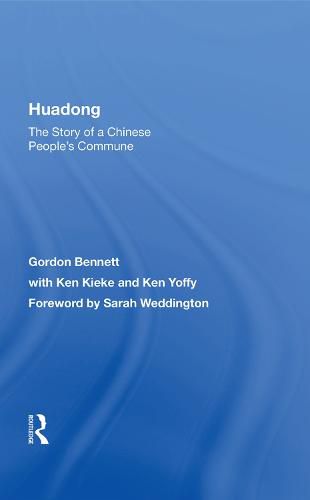Readings Newsletter
Become a Readings Member to make your shopping experience even easier.
Sign in or sign up for free!
You’re not far away from qualifying for FREE standard shipping within Australia
You’ve qualified for FREE standard shipping within Australia
The cart is loading…






This topical and concise report on one commune in China’s innovative commune system is designed to present key features of the system as a whole. The range of source materials-collected as a project of the Texas China Council and the University of Texas Center for Asian Studies-includes official Chinese documents, criticisms of a prominent regional leader published during the Cultural Revolution, official statements to foreign visitors at Huadong, observations about the commune by foreign visitors and journalists, and recollections by local emigres. The author emphasizes the personal views of commune residents, and calls attention to important changes over the last few years. The sixty-five photographs included in the book give a vivid sense of everyday life at Huadong. An introductory essay on the concept of the commune in Chinese Communist Party policy is followed by chapters covering Huadong’s government and politics, economy, society, and culture. The conclusion points to likely developments in the future.
$9.00 standard shipping within Australia
FREE standard shipping within Australia for orders over $100.00
Express & International shipping calculated at checkout
This topical and concise report on one commune in China’s innovative commune system is designed to present key features of the system as a whole. The range of source materials-collected as a project of the Texas China Council and the University of Texas Center for Asian Studies-includes official Chinese documents, criticisms of a prominent regional leader published during the Cultural Revolution, official statements to foreign visitors at Huadong, observations about the commune by foreign visitors and journalists, and recollections by local emigres. The author emphasizes the personal views of commune residents, and calls attention to important changes over the last few years. The sixty-five photographs included in the book give a vivid sense of everyday life at Huadong. An introductory essay on the concept of the commune in Chinese Communist Party policy is followed by chapters covering Huadong’s government and politics, economy, society, and culture. The conclusion points to likely developments in the future.